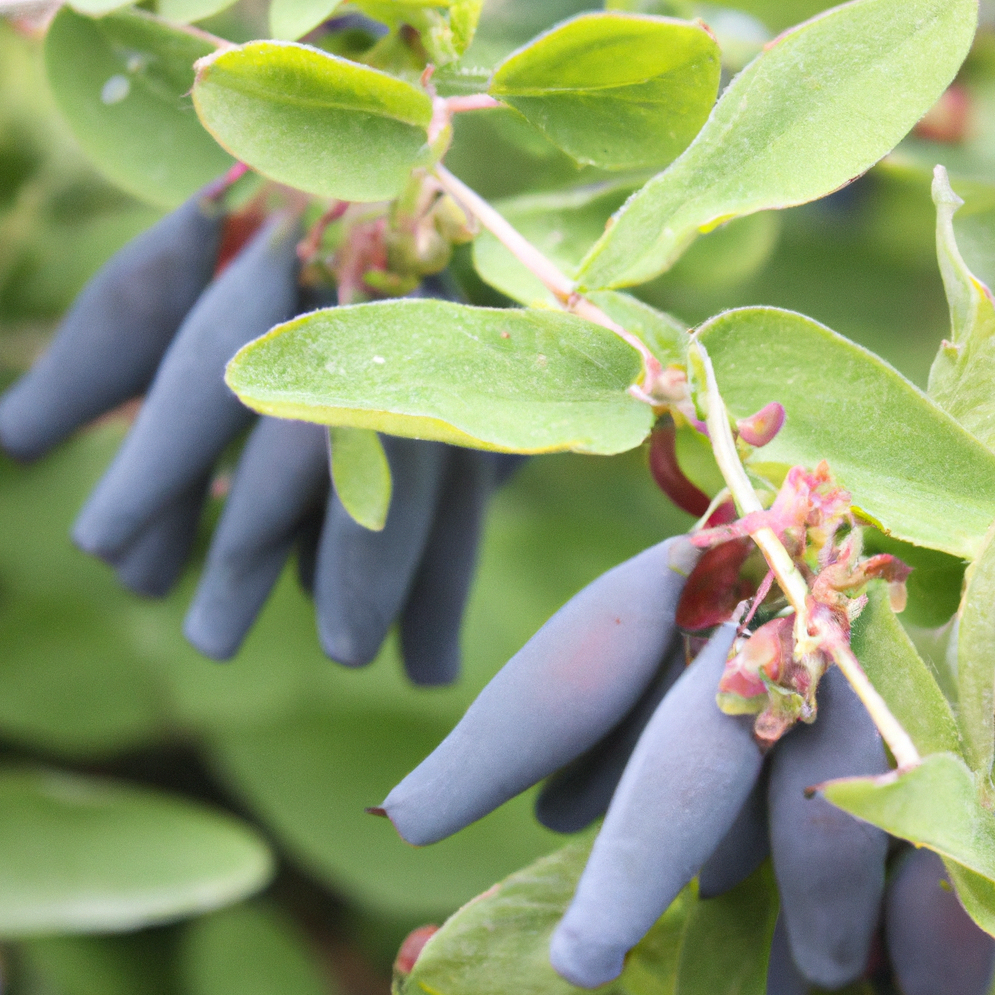The American Fig Company
Berry Blue Honeyberry
Berry Blue Honeyberry
Couldn't load pickup availability
The Berry Blue Honeyberry plant, also known as Lonicera caerulea var. edulis 'Berry Blue', is a deciduous shrub that is native to Siberia and other parts of Northern Asia. It belongs to the honeysuckle family and is a member of the genus Lonicera. The plant is highly valued for its edible fruit, which is blue in color and has a sweet and tart flavor, similar to that of a blueberry.
The Berry Blue Honeyberry plant typically grows to a height of three to five feet and has a spread of two to three feet. It has an upright, bushy habit with numerous branches that are covered in small, ovate leaves. The leaves are bright green in color and measure about two inches in length. The plant blooms in early spring, producing small, white, tubular flowers that are arranged in pairs along the branches. The flowers are followed by small, oval-shaped berries that ripen in late spring or early summer.
The fruit of the Berry Blue Honeyberry plant is highly nutritious and contains high levels of antioxidants, vitamin C, and fiber. It is also rich in flavonoids, which have been shown to have anti-inflammatory properties. The berries are typically harvested when they are fully ripe and can be eaten fresh or used in a variety of culinary applications, such as jams, jellies, and baked goods.
Overall, the Berry Blue Honeyberry plant is a hardy and low-maintenance shrub that is easy to grow and produces delicious and nutritious fruit. It is an excellent choice for gardeners who are looking for a unique and flavorful addition to their fruit garden.
Latin Name: Lonicera caerulea
Site and Soil: Honeyberries prefer full sun to partial shade and well-drained soil with a pH between 5.0 to 7.5. They can tolerate a wide range of soils, including sandy, loamy, or clay.
Pollination Requirements: Honeyberries are self-fertile, but planting two or more varieties can increase fruit production.
Hardiness: Honeyberries are hardy in USDA zones 2 to 9, with some varieties tolerating temperatures as low as -40°F. They require a winter chill period of 800 to 1,200 hours.
Bearing Age: Honeyberries typically start bearing fruit 2 to 3 years after planting.
Size at Maturity: Honeyberries are a shrub that can grow up to 6 to 8 feet tall and wide. They can be pruned to maintain a smaller size.
Bloom Time: Honeyberries bloom in early spring with small, pale yellow flowers.
Ripening Time: The fruit ripens in late May to early June, depending on the variety.
Yield: A mature honeyberry plant can produce 7 to 10 pounds of fruit or more, depending on the variety and growing conditions.
Pests & Diseases: Honeyberries are generally pest and disease-resistant, but they can be susceptible to aphids, mites, and powdery mildew. Regular monitoring and appropriate treatment can help prevent these issues.
USDA Zone: Honeyberries are hardy in USDA zones 2 to 9. Some varieties may be more suited to specific zones, so check with your local nursery or extension office for recommendations.
Share

Featured Review
"Great! Great! Great! Great! Great!"
✰✰✰✰✰
- JARREN -
